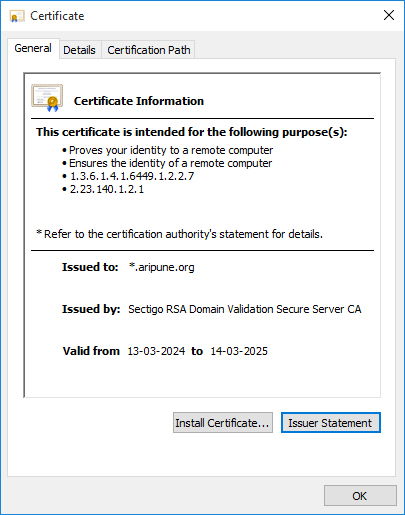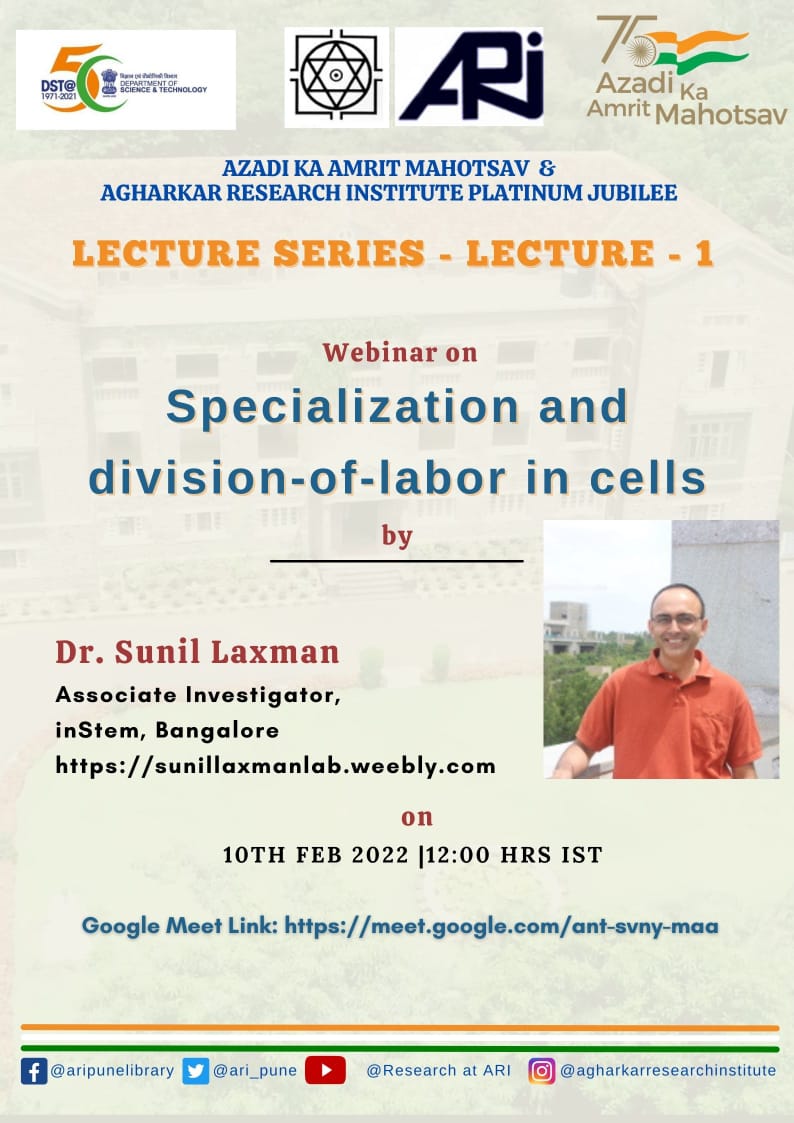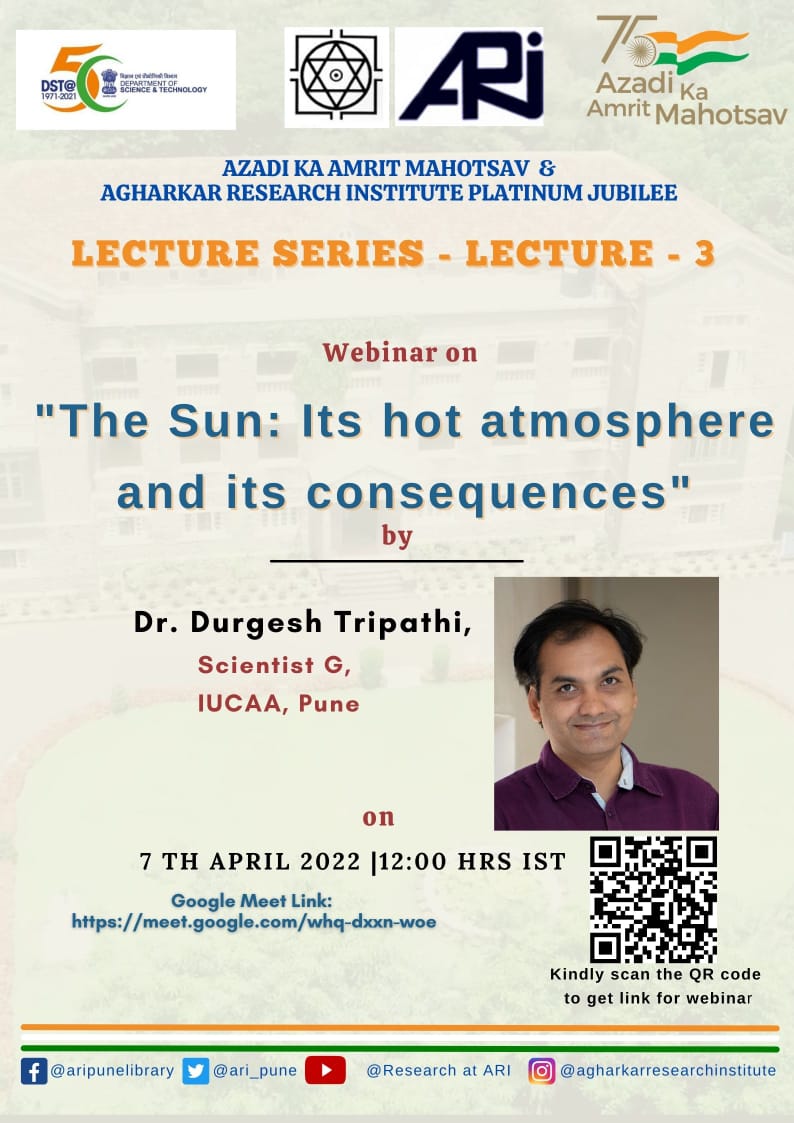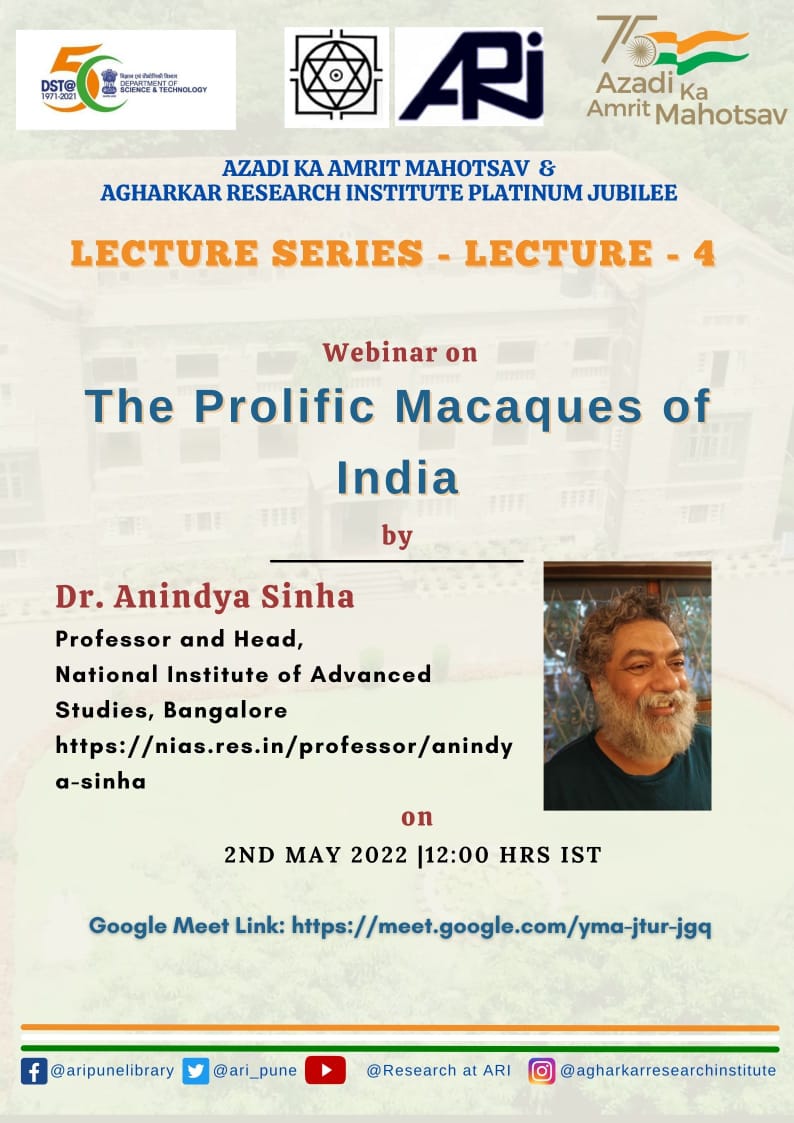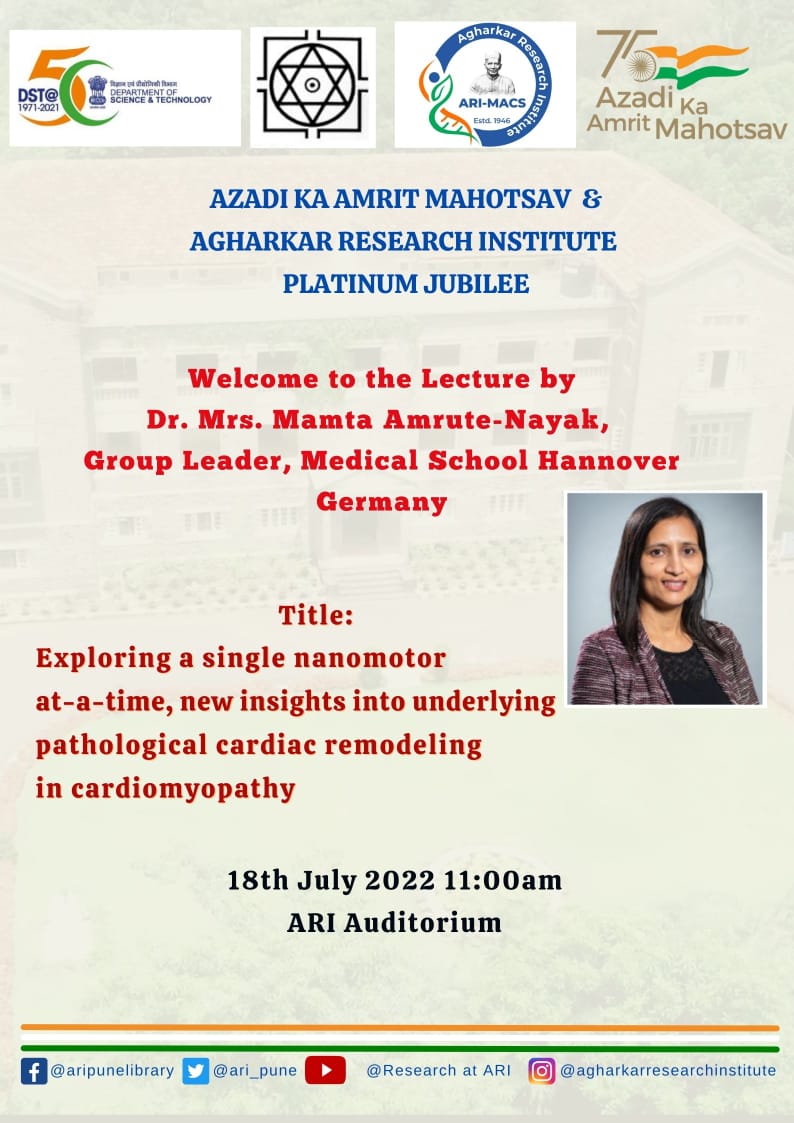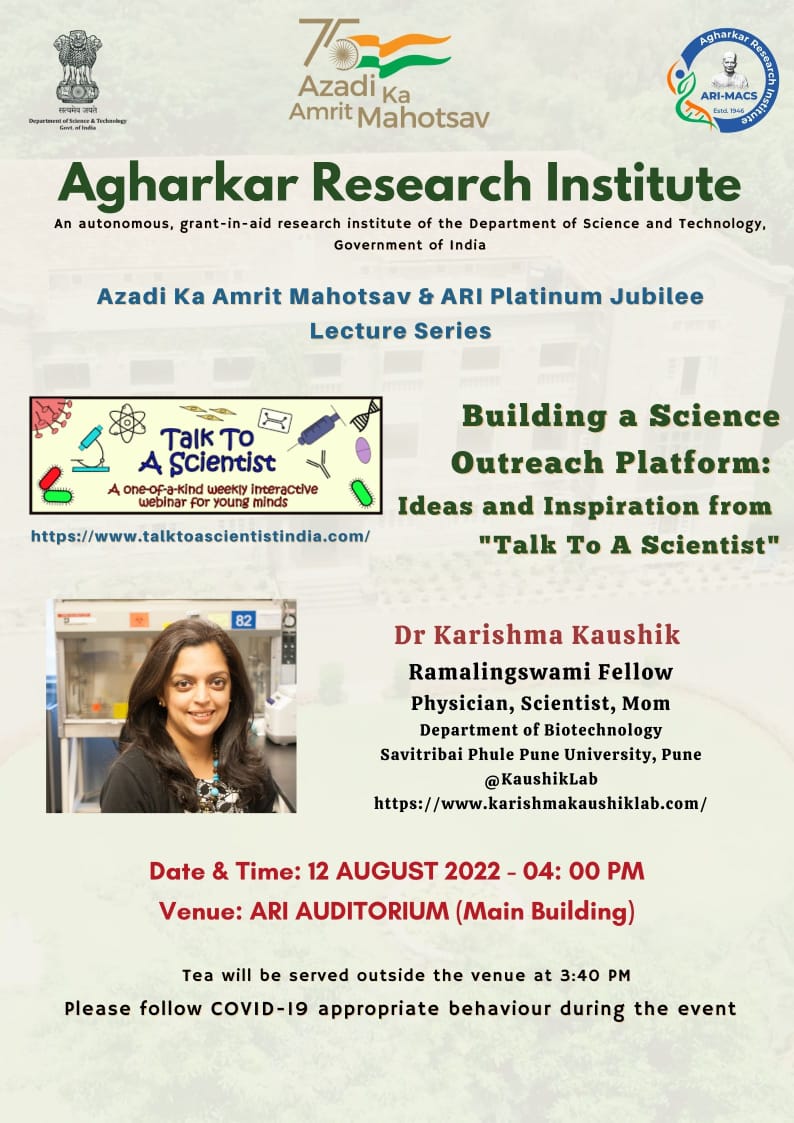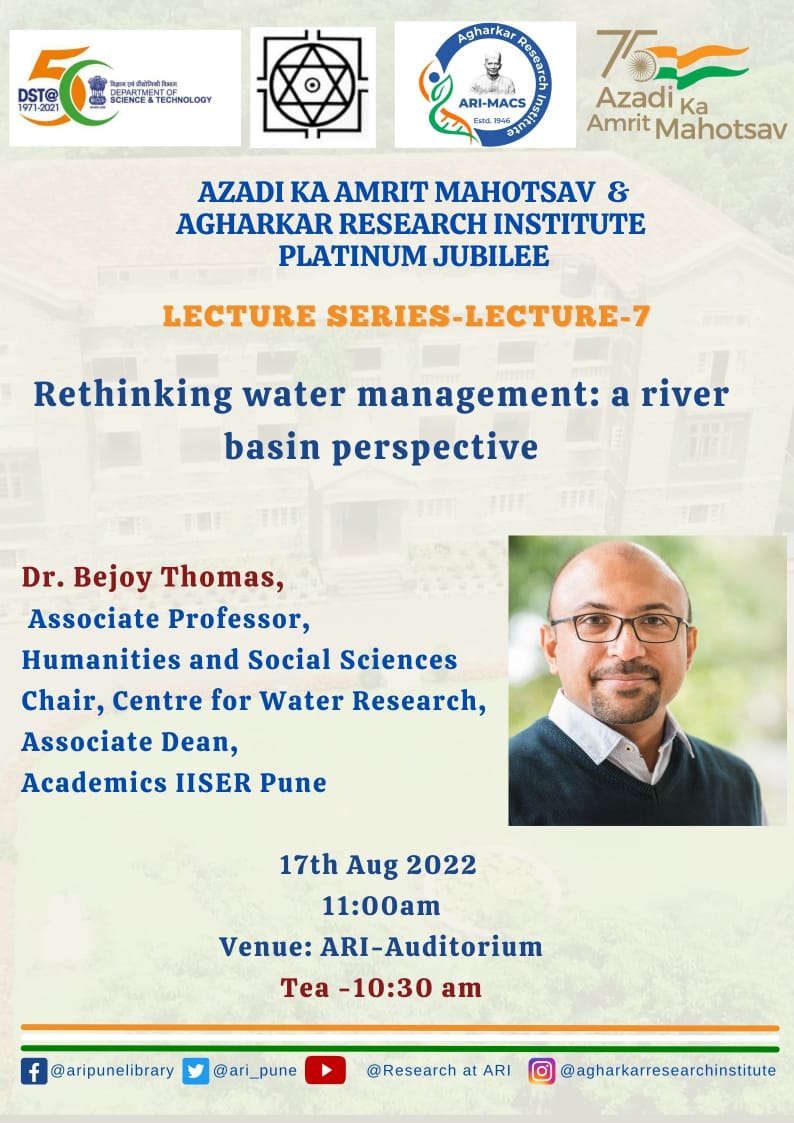
Google Scholar / Social Media
Designation : Scientist – D
Brief Background :
Born in January 1968. After Post Graduation for a short period, Dr. Paras Nath Singh worked as Supervisor in the Mechanical Maintenance Department and In-charge of a Drinking Water Purification Plant for Quality Control of Drinking and Factory Water Supply at Vindhya Telelinks Limited, a Birla Group Telephone and Optical Fiber Cable Making Company in Rewa, Madhya Pradesh.
Dr. Singh started his teaching career as a temporary Lecturer, at Dept. of Botany, Udit Narayan Post Graduate College Padrauna, Kushinagar, UP. After that, Dr. Singh joined as Research Associate in Mycology and Plant Pathology Group, Agharkar Research Institute, Pune, Maharashtra, India (12 Dec. 2003-11 Nov. 2005). Afterward, Dr. Singh joined as Scientist- B in 2005 at ARI.
Presently Dr. Paras Nath Singh is working as a Senior Scientist at Biodiversity & Palaeobiology (Fungi) Group and focused his research work on fungal diversity, systematics, conservation, and their potential applications.
Contact Details :
+91 20 25325104 (Office)
+91- 9423531352, 91-9325451694
- B.Sc. 1988 (Botany, Zoology, Chemistry), Gorakhpur University, Gorakhpur, U.P., India
- B.Sc. Bridge Course 1989 (Botany, Zoology), Gorakhpur University, Gorakhpur, U.P. India
- M. Sc. 1991 (Botany- Spec. in Pl. Pathology), Gorakhpur University, Gorakhpur, U.P. India
- Ph. D. 1997 Botany (Fungal Taxonomy), Gorakhpur University, UP, India
“Fungal Biodiversity Fungal Systematics, Characterization, Biopotential,Identification and conservation of Micromycetes”:
The field of biodiversity and paleobiology is very vast but I am especially interested in the fungal diversity, exploration, systematics, biopotential and conservation of micromycetes.
AnamorphicAscomycetes have been the focus of my research andcan be considered as my thrust area. Mycology forms the backbone for the understanding of plant pathogen and disease management and contributed to the research relating the control of powdery mildew in grapes caused by Erysiphe necatorusing some fungal bioagents.Isolated various novel indigenous fungal taxon from different habitats which can only be isolated by using specific media and techniques. Also worked on the phosphate solubilizing potential of Aspergillus, Penicillium etc. and was able to find good results that could be of commercial significance in concern to phosphate mineralisation in agricultural practices. The most exciting part of mycological research is the uncertainty in the outcomings of the results. Some interesting group of filamentous funguslike organisms viz. Saprolegnia, Phytophthora, Pythium were also isolated, out of these I was able to study the entire life cycle of Saprolegnia.
Fungal identification service and culture collection activities of NFCCI which is a unique centre to provide opportunity to contribute to the valued customers/client from academic, research and private centres in India. In this facility, I am actively involved in identification and taxonomy of the received cultures, soil samples, diseased crop samples etc. from various academia/industries and horti-biotech companies. As a scientist my expertise is in the field of fungal taxonomy, identification & conservation. Annually across the country, different academia, scientific institutions, farmers and industries are frequently benefited out of this. The various cultures isolated and identified by me belong to different group of fungi which include bio agent/plant pathogenic,nematophagous, entomopathogenic, phosphate solubilising and pigment producing etc. and are of academic and commercial importance.
Research Papers Published:
- Budathoki U & Singh PN (1994) Some new black mildews from Kathmandu valley. Indian Phytopath. 47 (4):377–380.
- Singh PN, Singh, SK & Tripathi SC (1996) New species of Pseudocercospora causing leaf spots of forest plants of Nepal. Mycol. Res. 100:1129–1132.
- Kharwar, RN, Singh PN &Chaudhadary RK (1996) New species of Mycovellosiellaassociated with foliar spots in Nepal. Mycol. Res. 100: 689–692.
- Bhartiya HD, Singh AN, Kumari N. &Singh PN (1997) Foliicolous fungi in the forest flora of North-Eastern Uttar Pradesh. Kavaka, 25: 43–51.
- Rao HSG, Moses AS &Singh PN (1996) Some new species of Pseudocercospora from India. Mycol. Res. 100: 1071–1074.
- Chaudhary RK Tripathi MS, Singh PN & Kamal (1997) Further additions to hyphomycete genus PhaeoramulariaMuntanola causing leaf spots in forest flora of Indian sub-continent. Kavaka, 25:79–85.
- Singh SK, Singh PN& Bhalla, K (1997) Novel taxa of Pseudocercosporella From Nepal Himalaya. Mycol. Res. 101: 542–544.
- Singh PN,Kharwar RN & Rao HSG (1997) Additions to hyphomycete genus Indian Phytopath. 50: 7–15.
- Singh PN, Tripathi MS & Chaudhary (1997) Hitherto undescribed species of Pseudocercospora hyphomycete causing leaf blights in India and Nepal Himalaya. Kavaka, 25: 31–42.
- Chaudhary RK, Tripathi MS, Singh, PN & Chaudhary S (2001) Novel Taxa of Stenella from forest flora of North-Eastern Uttar Pradesh. Indian Phytopath. 54: 226–232.
- Chaudhary RK, Singh SK, &Singh, PN (2002) Additions to Phaeoramularia Indian Phytopath. 55: 469–472.
- Sharma N,Singh PN& Kamal (2003) Three new taxa of Corynespora causing foliar blight in forest plants of North Eastern Uttar Pradesh. J. Mycol. Pl. Pathology 33: 26–32.
- Singh SK &Singh PN (2004) Some new species of Indian Phytopath. Phytopath. 57: 155–160.
- Singh SK, Singh PN (2005) New species of Sarcinella from India. Indian Phytopath. 58: 341–342.
- Singh SK, Singh Singh PN&Waingankar V (2005) Additions to the genus Ramularia (Hyphomycetes) from Maharashtra. J Eco Taxon Bot 29: 206–211.
- Singh SK, Singh Singh PN& Mishra P (2006) Contribution to the genus Polychaetonfrom South-West India. J. Mycol. Pl. Pathology 36: 101–103.
- Singh PN, Gaikwad SB & Singh SK (2007) Two interesting and undescribed species of Septoria from India. J. Eco. Taxon. Bot. 31: 543–546.
- Singh SK, Singh PN& Mishra P (2008) New species of Passalora(cercosporoid hyphomycete) from Western Ghats, India Czech Mycol. 60 (2):243–249 (Journal of the Czech Scientific Society for Mycology, CzechRepublic).
- Singh SK, Yadav Lal Sahab, Singh PN& Rahul Hepat (2009) A new species of Gonatophragmium from Western Ghats India. Mycotaxon 110: 183–187.(Impact Factor: 599)
- Singh PN, Satya P, Yadav LS and Singh SK (2009) “Disease Syndrome in Capsicum– A Case Study”. Indian Phytopathology 62 Part (3).
- KC Rajeshkumar,Singh PN, Yadav L S, Santosh VS & Singh SK (2010) Chaetospermumsetosum nov. from the Western Ghats, India. Mycotaxon Vol. 113: 397–404.(IF: 0.799).
- Singh SK,Yadav L S, Singh PN, Sharma R & KC Rajeshkumar (2010) New record of Gliocephalotrichum simplex from India. Mycotaxon :163–169.(IF: 0.799).
- Singh SM, Ydav LS, Singh SK, Singh P, Singh PN & Ravindra R (2011) Phosphate Solubilizing ability of two Arctic Aspergillus niger strains. Polar Research 30, 7283:1–(IF: 1.616).
- Singh SM, Yadav LS, Singh PN, Hepat R, Sharma R & Singh SK (2012) Arthriniumrasikravindriinov. from Svalbard, Norway. Mycotaxon 122:449–460. (IF: 0.752).
- Singh SK, Yadav LS, Singh PN, Sharma R &Mukhergee G (2012)Additions to Gliocephalotrichum (anamorphic Hypocreales) from fruit litter of the medicinal plant Terminaliachebula in the Western Ghats, India. Mycoscience Vol.53. No.5, 391–395.(IF: 1.2).
- Singh SM, Singh SK, Yadav LS, Singh PN, &Ravindra R (2012) Filamentous soil fungi from Ny-Alesund Spitsbergen and screening for extracellular enzymes. Arctic 65 (1): 45–55 (IF 0.988).
- Singh SM, Singh PN, Singh SK & Sharma PK (2013) Pigment, fatty acid and extracellular enzyme analysis of a fungal strain Thelebolusmicrosporus from Larseman Hills, Antarctica. Polar Record, First View Article: 1– (IF:0.981). doi: 10.1017/s00322412000563.
- Singh PN, Baghela A, Singh SK & Maurya DK (2015) Exosporiumgymnemae nov. from India. Mycosphere 6 (5): 508–514. Doi 10.5943/mycosphere/6/5/1
- Karandikar KG, Singh PN and Singh SK (2015) Mycoenterolobiumflabelliforme: a new anamorphic fungus from India. Plant Pathology & Quarantine 5(2): 49–51. Doi 10.5943/ppq/5/2/3
- Singh PN and Singh SK (2016) Additions to helicoid fungi for India. Current Research in Environmental & Applied Mycology 6 (4): 248–255. Doi 10.5943/cream/6/4/2
- Lagashetti A, Tetali S, PN Singh & SK Singh (2017) ParopjiviBurshidwareBhuriRogacheNiyantran. Drakshbrit, Sept.:17–18.
- Singh PN, Baghela A, Singh SK & Amir S., (2017) Evlachovaea indica nov. (:139-144) in Fungal diversity notes 491–602: taxonomic and phylogenetic contributions on genera and species of fungal taxa, in Tibpromma et al. Fungal Diversity. 83 :1–261. IF: 15.870
- Singh PN, Singh SK, Baghela A, Maurya DK &Lagashetti AC (2017) A new record of Helicosporium for India – linderi from Western Ghats.Austrian J. Mycol. 26, 43–50.
- Rana S, Singh PN, Gaikwad S B & Singh SK (2017) Morphology, phylogeny and ex-situ conservation of (ApiosporaceaeXylariales): a new record from India Kavaka 49:1–5.
- Singh PN., Singh SK, Tetali SP &Lagashetti AC (2017) Biocontrol of powdery mildew of grapes using culture filtrate and biomass of fungal isolates. Plant Pathology & Quarantine 7(2): 181–189. Doi 10.5943/ppq/7/2/12
- Surywanshi J, Rai AN, Singh PN (2018)Saksenamyceskamalii gen &spnov., from India. 133:423–428.https: doi.org/10.5248/133.423IF: 0.488
- Singh PN, Singh SK, Lagashetti AC1 &Ackah FK (2018) Morphotaxonomic and phylogenetic analysis of Saprolegnia ferax from India. Studies in Fungi 3(1): 49–58. Doi 10.5943/sif/3/1/7
- Rana S, Singh S K and Singh P N (2019) Morphology and phylogeny of a new species of Trichomerium from North‑Western Himalayas, India. IndainPhytopatholohy. 72: 427–435. IF: 0.23
- Singh P N & Singh S K (2019)Hyweljonesia indica nov. in Fungal Diversity Notes 929–1035: taxonomic and phylogenetic contributions on genera and species of fungiin Phookamsaket al. Fungal Diversity95:1–273IF: 15.386
- Singh PN & Singh S K (2019)Neoacladium indicumet. sp. nov., in Fungal diversity notes 1036–1150: taxonomic and phylogenetic contributions on genera and species of fungal taxa, in Hyde, K.D., et al. Fungal Diversity. 96 issue1:1–242.IF: 15.386
- Rana S, Singh SK and Singh PN (2019) Strelitzianasarbhoyi nov. (Strelitzianaceae, Chaetothyriales), from NorthWesternHimalayas, India, described based on morphology and molecular phylogeny. Phytotaxa 427 (1): 051–059.IF:1.230
- Singh A, Singh Singh NK, Singh P N, Singh R K & Dubey NK (2019) Additions to Ochroconis from India. Phytotaxa 427(3): 186–199.IF:1.230
- Lagashetti AC, Dufossé L, Singh S K & Singh PN (2019) Fungal pigments and their prospects in different industries. Microorganisms 7, 604:1–36. IF:4.167
Book Chapters:
- Narayana S, Singh PN and Rao GP (1999) Taxonomic treatment of Cercosporiod fungi causing foliar spots of weed flora of Sugarcane crop: Cercospora In: Sugarcane Pathology (Volume I: Fungal Diseases), Eds. GP Rao, A.Bergamin Filho, RC Magarey and L.J.C. Autrey. Science Publishers, Inc., U.S.A., pp. 53-106.
- SK Singh, PN Singh, SB Gaikwad & DK Maurya (2018) Conservation of fungi: A review on conventional approaches: In soil Biology, SK Sharma &Ajit Varma Microbial Resource Conservation: Conventional to Modern Approaches, Springer Nature Switzerland.
https://doi.org/10.1007/978–319–96971–8











